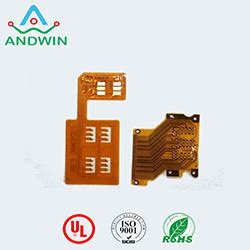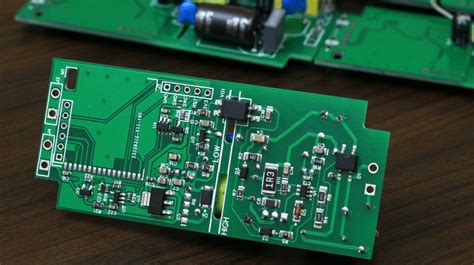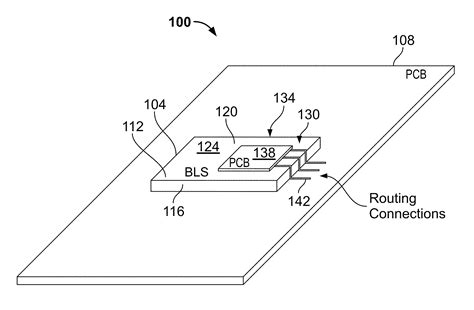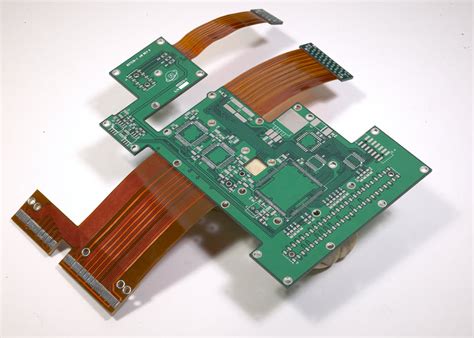High frequency pcb laminates
Understanding The Role Of Dielectric Constant In High Frequency PCB Laminates
In the realm of high-frequency printed circuit boards (PCBs), the choice of laminate material is crucial to the performance and reliability of the final product. One of the most significant properties to consider when selecting a laminate for high-frequency applications is the dielectric constant, often denoted as εr. Understanding the role of the dielectric constant in high-frequency PCB laminates is essential for engineers and designers aiming to optimize signal integrity and minimize losses.
The dielectric constant of a material is a measure of its ability to store electrical energy in an electric field.
.In the context of high-frequency PCBs, this property directly influences the speed at which signals propagate through the circuit. A lower dielectric constant typically results in faster signal transmission, which is desirable in high-speed applications. Conversely, a higher dielectric constant can slow down signal propagation, potentially leading to timing issues and signal degradation. Therefore, selecting a laminate with an appropriate dielectric constant is critical to ensuring that the PCB meets the desired performance specifications.
Moreover, the dielectric constant affects the impedance of transmission lines on the PCB.
Impedance matching is vital in high-frequency circuits to prevent signal reflections that can cause interference and degrade signal quality. By carefully choosing a laminate with a suitable dielectric constant, designers can achieve the desired impedance levels, thereby enhancing the overall performance of the circuit. This consideration is particularly important in applications such as RF communication systems, where maintaining signal integrity is paramount.
In addition to influencing signal speed and impedance, the dielectric constant also plays a role in determining the size of the PCB traces.
A lower dielectric constant allows for wider tracesations in signal speed and impedance, resulting in unpredictable circuit behavior. High-frequency PCB laminates with stable dielectric constants ensure consistent performance across different operating conditions, which is essential for applications that demand high reliability and precision.
It is also worth noting that the dielectric constant is not the only property to consider when selecting a high-frequency PCB laminate
. Other factors, such as dielectric loss, thermal conductivity, and mechanical properties, also play significant roles in the overall performance of the PCB. However, the dielectric constant remains a primary consideration due to its direct impact on signal integrity and circuit performance.
In conclusion, the dielectric constant is a fundamental property that significantly influences the performance of high-frequency PCB laminates. By understanding its role in signal propagation, impedance matching, trace sizing, and stability, engineers and designers can make informed decisions when selecting materials for high-frequency applications. This understanding ultimately leads to the development of PCBs that meet the stringent demands of modern high-speed and high-frequency electronic systems.

Comparing Different Types Of High Frequency PCB Laminates For Optimal Performance
In the realm of high-frequency applications, the selection of appropriate printed circuit board (PCB) laminates is crucial for ensuring optimal performance. High-frequency PCB laminates are specifically engineered to handle the demands of high-speed and high-frequency signals, which are prevalent in modern communication systems, radar, and advanced computing technologies. The choice of laminate material can significantly impact the electrical performance, thermal management, and overall reliability of the PCB. Therefore, understanding the differences between various types of high-frequency PCB laminates is essential for engineers and designers aiming to optimize their designs.
One of the primary considerations when selecting a high-frequency PCB laminate is its dielectric constant (Dk).
The dielectric constant is a measure of a material’s ability to store electrical energy in an electric field. Materials with a low dielectric constant are generally preferred for high-frequency applications because they reduce signal loss and improve signal integrity. For instance, PTFE (polytetrafluoroethylene) laminates, commonly known as Teflon, are widely used due to their low dielectric constant and excellent electrical properties. However, PTFE laminates can be challenging to process and may require specialized manufacturing techniques.
In contrast, ceramic-filled laminates offer a balance between performance and manufacturability.
These laminates incorporate ceramic particles into a resin matrix, which enhances their thermal and mechanical properties while maintaining a relatively low dielectric constant. This makes them suitable for applications where both high-frequency performance and structural integrity are critical. Additionally, ceramic-filled laminates often exhibit better dimensional stability compared to PTFE, which can be advantageous in multilayer PCB designs.
Another important factor to consider is the dissipation factor, which measures the dielectric losses in a material.
A lower dissipation factor indicates that the material will have lower energy losses, which is particularly important in high-frequency applications where signal attenuation must be minimized. Rogers Corporation, a leading manufacturer of high-frequency laminates, offers a range of materials with low dissipation factors, such as the RO4000 series. These materials are designed to provide excellent electrical performance while being easier to process than traditional PTFE laminates.
Thermal management is also a critical aspect of high-frequency PCB design.
As frequencies increase, so does the potential for heat generation, which can adversely affect the performance and reliability of the circuit. High-frequency laminates with good thermal conductivity can help dissipate heat more effectively, thereby enhancing the overall thermal management of the PCB. For example, some high-frequency laminates incorporate metal backings or are designed with enhanced thermal pathways to improve heat dissipation.
Moreover, the mechanical properties of the laminate, such as its coefficient of thermal expansion (CTE), play a significant role in the reliability of the PCB.
A mismatch in CTE between the laminate and other materials used in the PCB can lead to mechanical stress and potential failure during thermal cycling. Therefore, selecting a laminate with a compatible CTE is essential for ensuring long-term reliability, especially in applications subjected to varying temperature conditions.
In conclusion, the selection of high-frequency PCB laminates involves a careful evaluation of various material properties, including dielectric constant, dissipation factor, thermal conductivity, and mechanical stability. By understanding the trade-offs and advantages of different laminate types, engineers can make informed decisions that optimize the performance and reliability of their high-frequency applications. As technology continues to advance, the demand for high-performance PCB laminates will only grow, making it imperative for designers to stay informed about the latest developments in this critical area.

The Impact Of Thermal Management On High Frequency PCB Laminates
High frequency PCB laminates are critical components in the design and functionality of modern electronic devices, particularly those that operate at microwave frequencies. As the demand for faster and more efficient electronic devices continues to grow, the importance of effective thermal management in high frequency PCB laminates becomes increasingly apparent. Thermal management is crucial because it directly impacts the performance, reliability, and longevity of these laminates. To understand the significance of thermal management, it is essential to consider the various factors that influence the thermal behavior of high frequency PCB laminates.
Firstly, the materials used in high frequency PCB laminates play a pivotal role in thermal management.
These laminates are typically composed of specialized materials that offer low dielectric loss and stable dielectric constants, which are essential for maintaining signal integrity at high frequencies. However, these materials often have varying thermal conductivities, which can affect heat dissipation. For instance, materials with higher thermal conductivity can more effectively dissipate heat, reducing the risk of thermal hotspots that can degrade performance. Therefore, selecting the appropriate laminate material is a critical step in optimizing thermal management.
Moreover, the design of the PCB itself significantly influences thermal management.
The layout and arrangement of components on the PCB can create areas of concentrated heat, known as thermal hotspots. These hotspots can lead to localized overheating, which may cause component failure or signal distortion. To mitigate this, designers must strategically place components and incorporate thermal vias, heat sinks, and other cooling mechanisms to enhance heat dissipation. By doing so, they can ensure that the thermal load is evenly distributed across the PCB, thereby maintaining optimal operating conditions.
In addition to material selection and design considerations, the operating environment of high frequency PCB laminates also impacts thermal management.
External factors such as ambient temperature, airflow, and humidity can influence the thermal performance of these laminates. For example, in environments with high ambient temperatures, the efficiency of heat dissipation may be compromised, necessitating additional cooling solutions. Similarly, inadequate airflow can lead to heat accumulation, further exacerbating thermal management challenges. Therefore, it is imperative to consider the operating environment when designing and implementing thermal management strategies for high frequency PCB laminates.
Furthermore, advancements in technology have led to the development of innovative thermal management solutions.
For instance, the use of advanced thermal interface materials (TIMs) can enhance heat transfer between components and heat sinks, improving overall thermal performance. Additionally, the integration of active cooling systems, such as fans or liquid cooling, can provide more effective heat dissipation in high-power applications. These technological advancements offer new opportunities for optimizing thermal management in high frequency PCB laminates, ensuring that they can meet the demands of increasingly complex electronic systems.
In conclusion, the impact of thermal management on high frequency PCB laminates is profound, influencing their performance, reliability, and lifespan. By carefully selecting materials, designing efficient layouts, considering environmental factors, and leveraging advanced cooling technologies, engineers can effectively manage thermal challenges. As electronic devices continue to evolve, the importance of robust thermal management strategies will only grow, underscoring the need for ongoing research and innovation in this critical area. Through these efforts, high frequency PCB laminates can continue to support the rapid advancement of technology, enabling the development of faster, more efficient, and more reliable electronic devices.

Innovations In Material Science For High Frequency PCB Laminates
In recent years, the field of material science has witnessed significant advancements, particularly in the development of high frequency printed circuit board (PCB) laminates. These innovations are crucial as they cater to the ever-growing demand for faster and more efficient electronic devices. High frequency PCBs are essential in applications such as telecommunications, radar systems, and advanced computing, where signal integrity and speed are paramount. Consequently, the choice of materials used in these laminates plays a pivotal role in determining the performance and reliability of the final product.
One of the primary challenges in designing high frequency PCB laminates is minimizing signal loss.
Traditional materials, such as FR-4, often fall short in high frequency applications due to their higher dielectric losses. To address this, researchers have developed specialized materials with lower dielectric constants and loss tangents. These materials, such as PTFE (polytetrafluoroethylene) composites, offer superior electrical properties, making them ideal for high frequency applications. PTFE, known for its excellent thermal stability and low dielectric loss, has become a popular choice for high frequency PCB laminates. However, its inherent mechanical properties pose challenges in processing and handling, necessitating further innovations in composite formulations.
In addition to PTFE, other materials like ceramic-filled laminates have gained traction. T
these laminates incorporate ceramic particles into the polymer matrix, enhancing thermal conductivity and dimensional stability while maintaining low dielectric losses. The integration of ceramics not only improves the electrical performance but also addresses the thermal management issues prevalent in high frequency applications. As electronic devices continue to shrink in size, efficient heat dissipation becomes increasingly critical, making ceramic-filled laminates a promising solution.
Moreover, the advent of liquid crystal polymer (LCP) laminates marks another significant innovation in this domain.
LCPs offer a unique combination of low moisture absorption, excellent dimensional stability, and low dielectric constant, making them suitable for high frequency and high-speed digital applications. Their inherent flexibility also allows for the development of flexible PCBs, which are increasingly in demand for wearable technology and other compact electronic devices. The versatility of LCPs in various applications underscores their potential as a game-changer in the realm of high frequency PCB laminates.
Furthermore, advancements in nanotechnology have opened new avenues for enhancing the properties of high frequency PCB laminates.
By incorporating nanoparticles into the laminate materials, researchers have been able to achieve significant improvements in mechanical strength, thermal conductivity, and electrical performance. These nanocomposites offer a promising approach to overcoming the limitations of traditional materials, paving the way for more efficient and reliable high frequency PCBs.
In conclusion, the innovations in material science for high frequency PCB laminates are driven by the need for improved performance and reliability in modern electronic devices. The development of advanced materials such as PTFE composites, ceramic-filled laminates, liquid crystal polymers, and nanocomposites highlights the ongoing efforts to address the challenges associated with high frequency applications. As technology continues to evolve, the demand for high frequency PCBs will only increase, necessitating further research and development in this critical area. The future of high frequency PCB laminates lies in the continued exploration of novel materials and the optimization of existing ones, ensuring that they meet the ever-changing requirements of the electronics industry.







